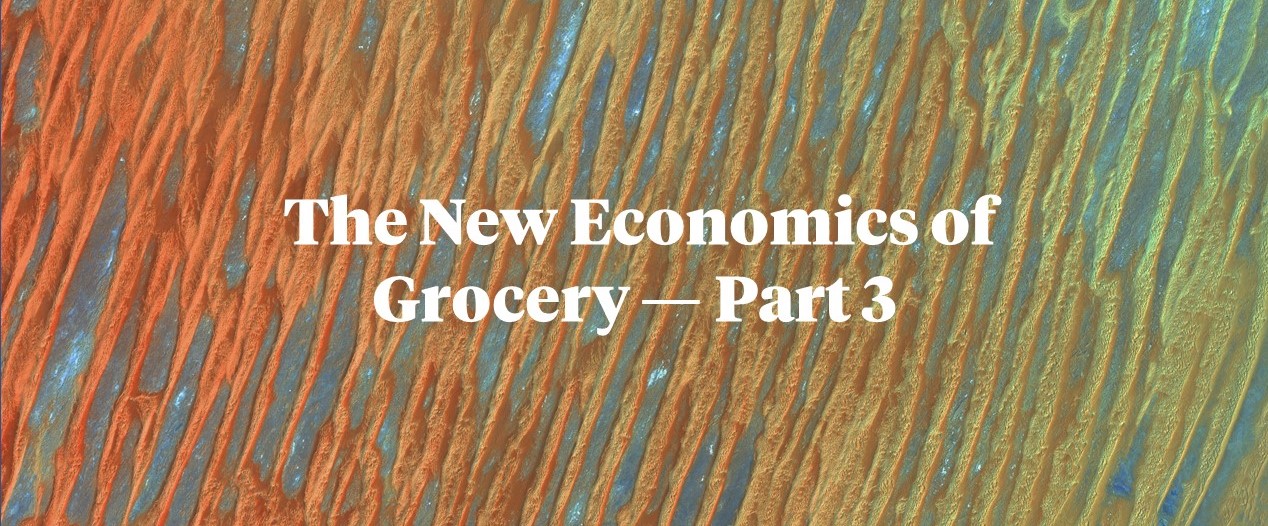
Matt Andrew, our UK managing director and partner, chatted with Ash Anzie, Senior Continuous Insights Manager, International at Kraft-Heinz, and Tom Priestman, Global Client Partnership Lead for FMCG at Facebook, to discuss the new economic challenges and opportunities in grocery.
In this final article of a three-part series, we discuss how grocers and manufacturers can capitalize on new consumer habits and where they can best direct their marketing spend.
Tom: The pace of change is the biggest challenge. How the pandemic was impacting consumer demand and consumer behavior, how retailers responded — it was happening across the world, it wasn’t specific industries or clients or brands. That pace of change is probably not going to slow down — there will be new challenges coming up.
We saw an increased trend of consumers saying that they’re not “going shopping” they’re “going buying.” It’s a weird articulation, but the intention behind it is that it’s an uncomfortable experience now when you go shopping. The general feeling is that you want this over and done with as fast as possible.
Being able to identify this and capitalize on it is the challenge for FMCGs and brands that can’t base a lot of their traditional decision making process around annual brand plans. They have to be considerably more flexible than previously.
Tom: I’ve heard it referred to as D-commerce (discovery commerce), and that’s actually where we can play a stronger role. People discovering brands or being able to browse and read and explore elements of a category, that might not happen at shelf anymore. But they do have time and space to do so at home on their mobile devices.
E-commerce clients from our side have been doing this for years — setting up media, iterating, learning what’s worked and then building upon that. How you utilize that data from a branding point of view is much longer term. Being agile enough to capitalize on that information and think like a more disruptive-style brand is probably where the excitement within the industry will land.
Ash: It’s a very good question. I agree that any company would be looking at how they invest their money and make sure they’re investing it in a way that’s meaningful, that adds value, and that genuinely builds equity. Some channels will probably be a bit more effective than others in the short term to medium term.
There will still be some wariness about the extent to which you would use certain aspects of media in your marketing mix. For example, there was a huge change at the start of the lockdown in how we invested in promotions. We basically went to no promotions at all, and consumers were still quite happy to buy what they were buying before. Promotions are good at building volume and less good at driving profitable sales in the long term, because you don’t want consumers to be conditioned to only buy your brand on deal.
Media will still be hugely important for us. How we invest in proposition will become a bit more of a priority. Brands with strong equity need to keep reinforcing that position — and not necessarily through the brands that you have and how you sell that brand to consumers, but how you talk about that brand outside of the world of food and drink.
We’ve seen some really nice examples throughout the lockdown of brands taking their message outside of the categories or the industries in which they operate to try and do better for the world. There’s genuine intent behind that. For example, we’ve been partnering with a charity called Magic Breakfast for years, donating meals to children who can’t afford to have breakfast. We made a very strong commitment at the beginning of the lockdown to help those children in need. And we’re not the only company that has done this.
When we look at how we talk to consumers, it feels like we’re moving from it being just about the brand for the consumer that we want to consume it, and more about our role in the world and in the lives of our consumers. That may start to signal a bit of a shift in where marketing investment goes. How do you start to talk about the world more than you talk about your product in your category? That’s a very specific message.
We’re becoming a bit more worldly aware, and that’s going to drive some of the decisions that we make, whether it’s environmental, or about how we make more of a difference to the lives of our consumers.
Conclusion
Based on our experience supporting grocery brands and on the insight from Ash and Tom, we’ve identified three key steps that businesses should take to optimize marketing efforts in the months ahead:
For more insight into the new economics of grocery, request the free report, “From Pandemic to Price Wars: Winning in the new world of grocery.”
To read the first article, click here, for the second article, click here.
To hear the full podcast, subscribe to the Ekimetrics channel on your platform of choice.
For more information on Ekimetrics and how we help provide certainty through marketing science, visit ekimetrics.com.
Thought Leadership

Thought Leadership
